This is the third in my “Southern California Bight Sampler (Post-Covid?)” series:
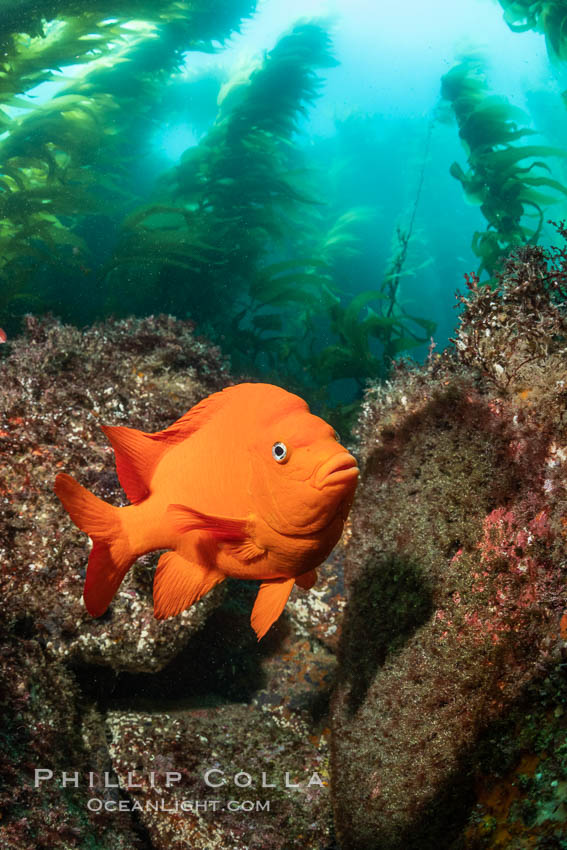
Garibaldi maintains a patch of algae (just in front of the fish) to entice a female to lay a clutch of eggs.
Image ID: 37144
Much of the underwater terrain of Catalina Island has been bereft of kelp for the last 10 years or so, due in large part to displacement by invasive sargassum. For some reason, though, the extreme West End kelp forests seem to be thriving, and that is my preferred spot to dive when diving Catalina. I got out there recently with five friends on the Giant Stride and we had a fantastic day. We first hit a large kelp bed just east of Eagle Rock. That’s where I learned that one of my strobes decided to call it quits. Normally I would have been hissing and spitting and taking out my frustration on any nearby urchin, but I was so stoked to be in a mature kelp forest with sunlight peeking through and fish swimming about that I buckled up my panties, found zen and spent the day photographing the way I had 30 years ago, with a single giant strobe illuminating the reef in front of me. We moved over to the lee side of West End for the rest of the day, and enjoyed calm clean blueish water and more wonderful kelp. Some pyrosomes were floating about in the water column, and many garibaldis were mating and presenting their nests. While not the cleanest shots, I was happy with some of them and share them below. Cheers, and thanks for looking!
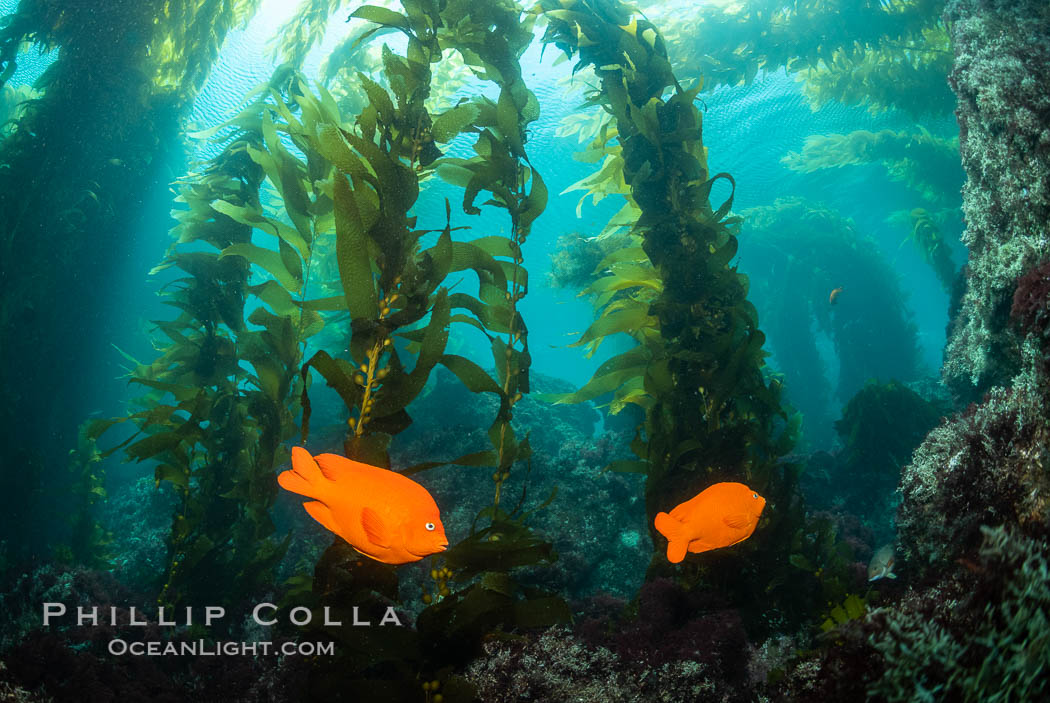
Garibaldi in kelp forest, Catalina Island.
Image ID: 37145
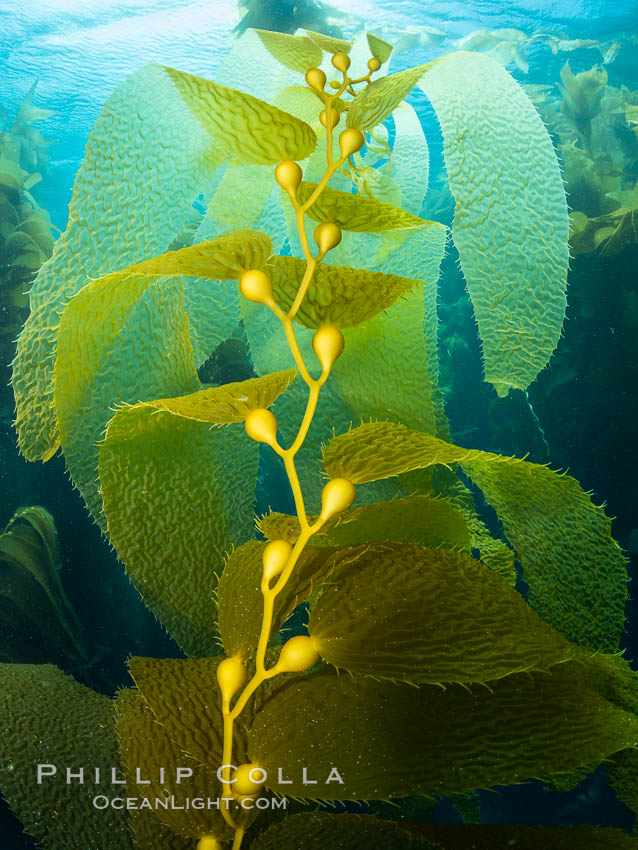
Kelp fronds showing pneumatocysts, bouyant gas-filled bubble-like structures which float the kelp plant off the ocean bottom toward the surface, where it will spread to form a roof-like canopy.
Image ID: 37146
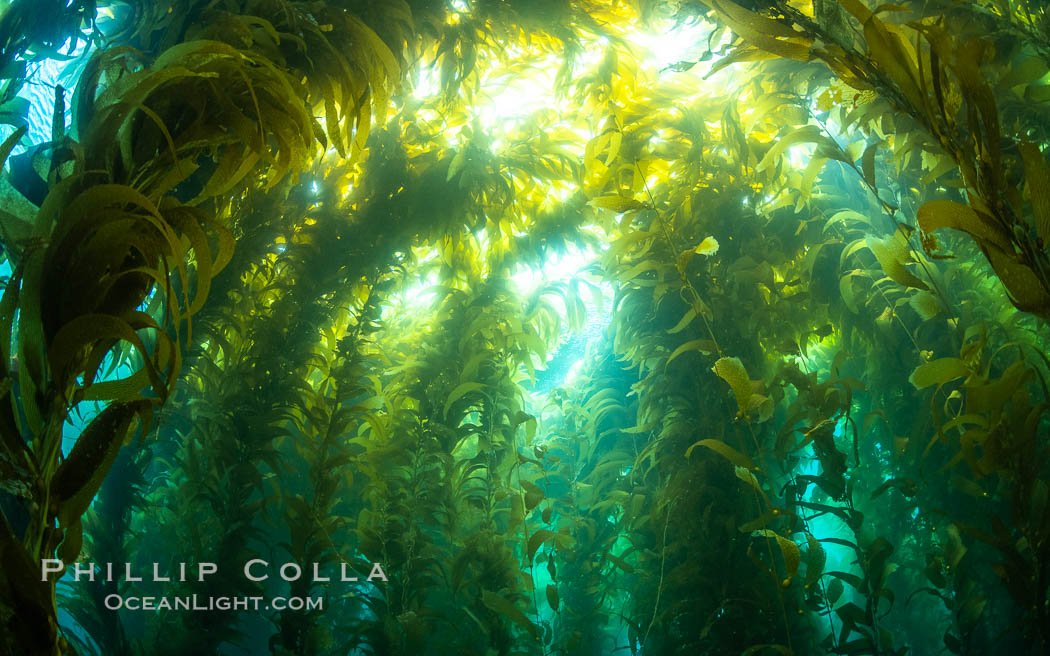
Kelp forest at West End, Catalina Island.
Image ID: 37147
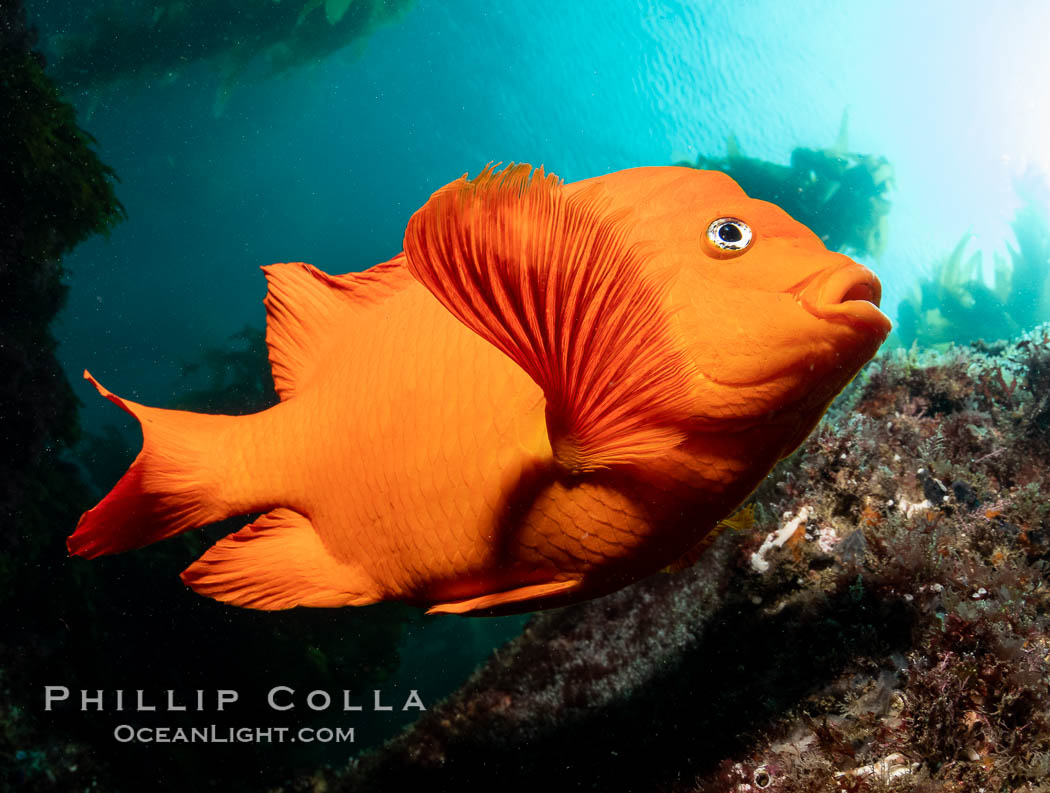
Garibaldi in kelp forest, Catalina Island.
Image ID: 37148
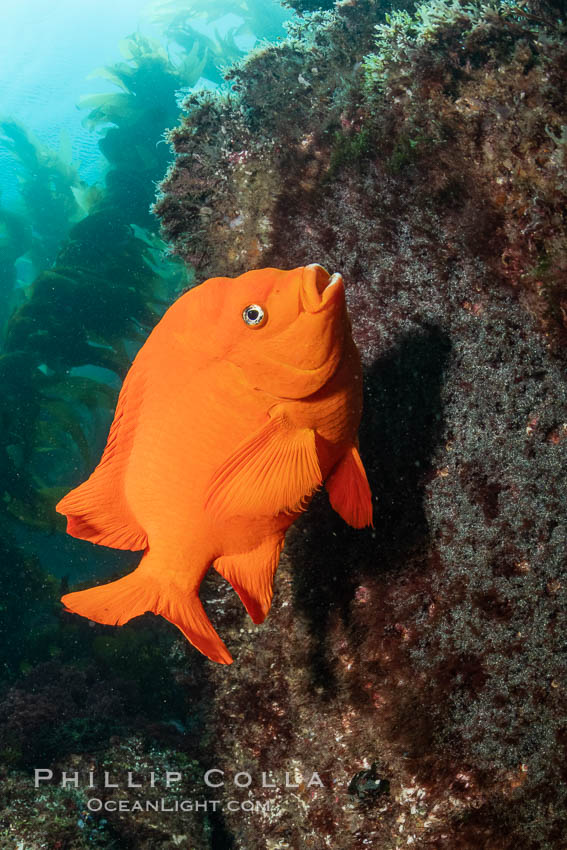
Garibaldi maintains a patch of algae (just in front of the fish) to entice a female to lay a clutch of eggs.
Image ID: 37149
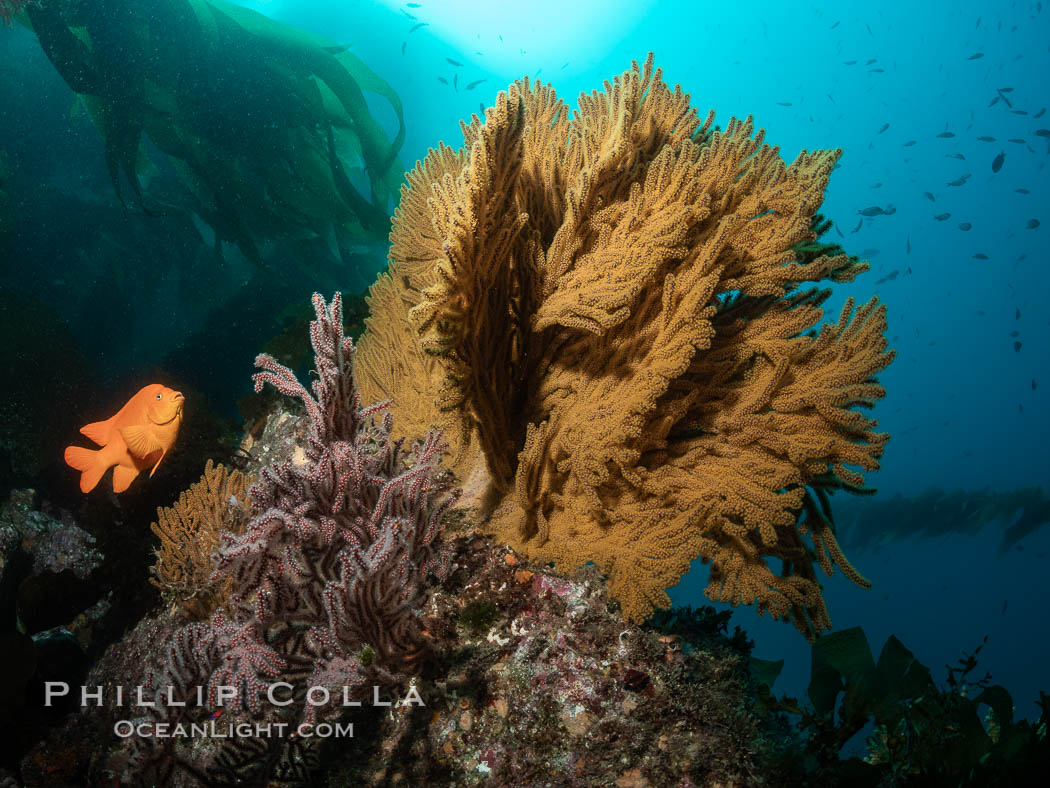
Garibaldi and golden gorgonian, with a underwater forest of giant kelp rising in the background, underwater.
Image ID: 37154
Location: Catalina Island, California, USA
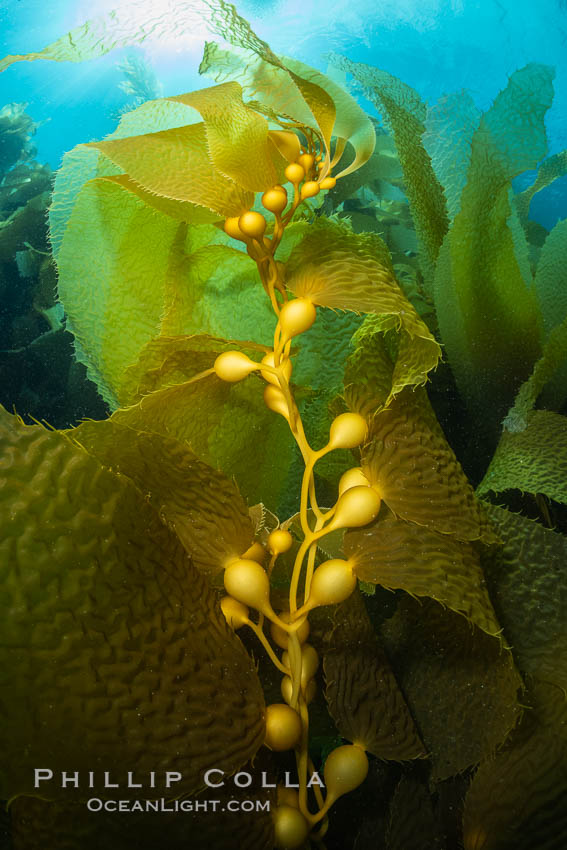
Kelp fronds showing pneumatocysts, bouyant gas-filled bubble-like structures which float the kelp plant off the ocean bottom toward the surface, where it will spread to form a roof-like canopy.
Image ID: 37150
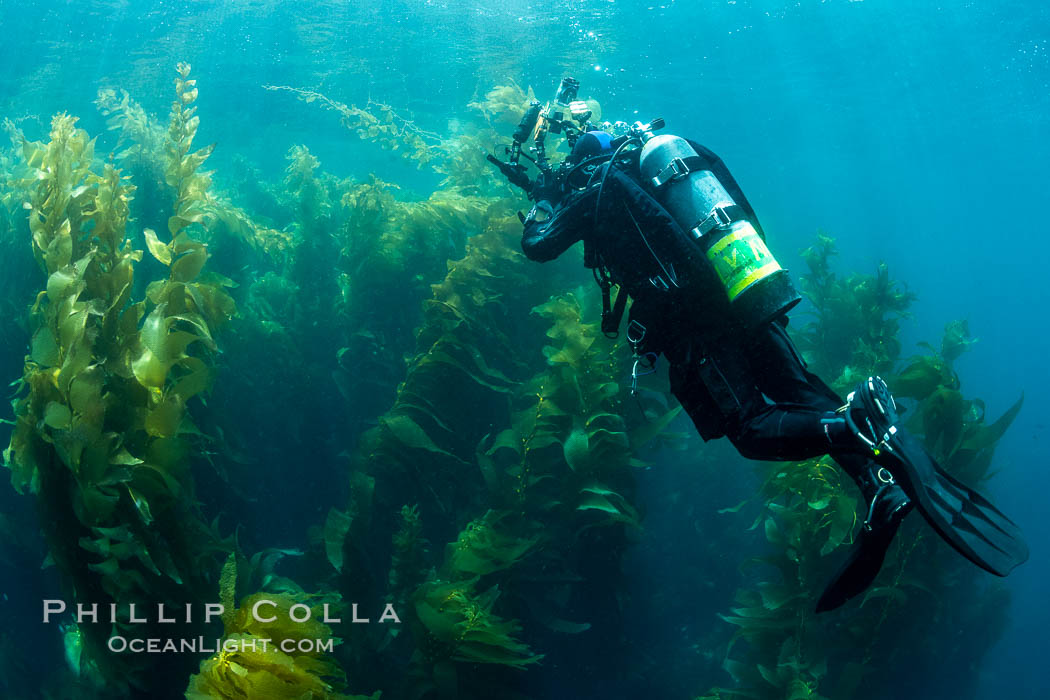
Diver and Kelp Forest, Catalina Island.
Image ID: 37152
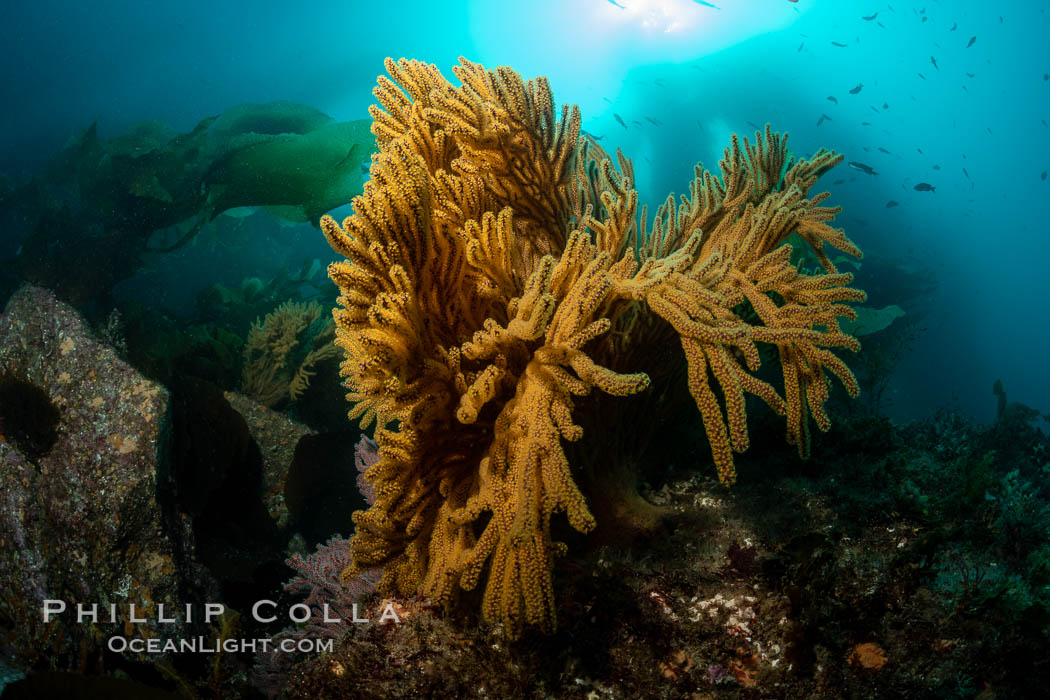
Golden gorgonian on underwater rocky reef, amid kelp forest, Catalina Island. The golden gorgonian is a filter-feeding temperate colonial species that lives on the rocky bottom at depths between 50 to 200 feet deep. Each individual polyp is a distinct animal, together they secrete calcium that forms the structure of the colony. Gorgonians are oriented at right angles to prevailing water currents to capture plankton drifting by.
Image ID: 37155
Location: Catalina Island, California, USA
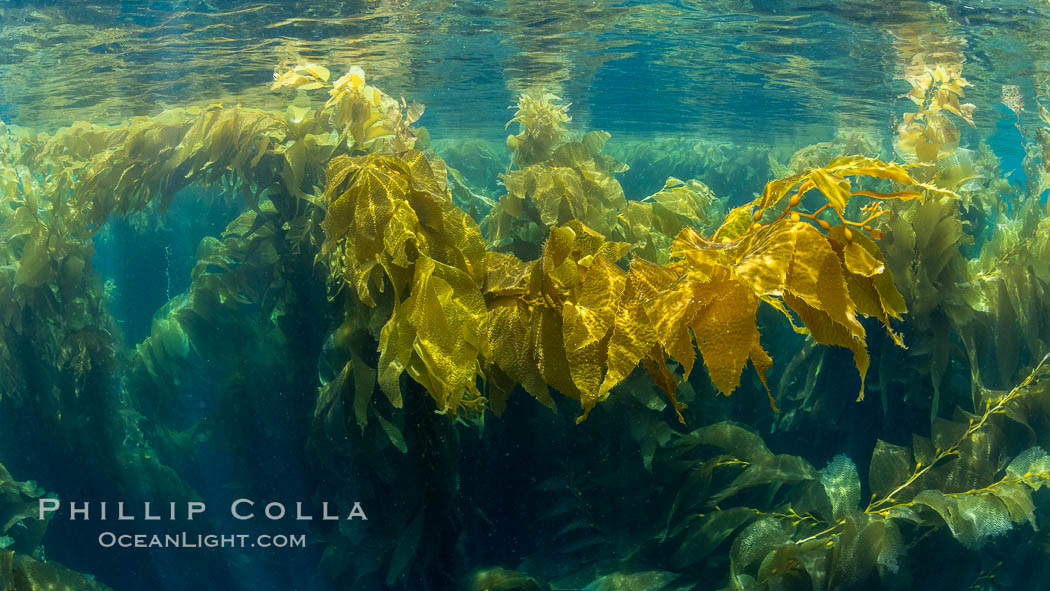
Kelp forest at West End, Catalina Island.
Image ID: 37153
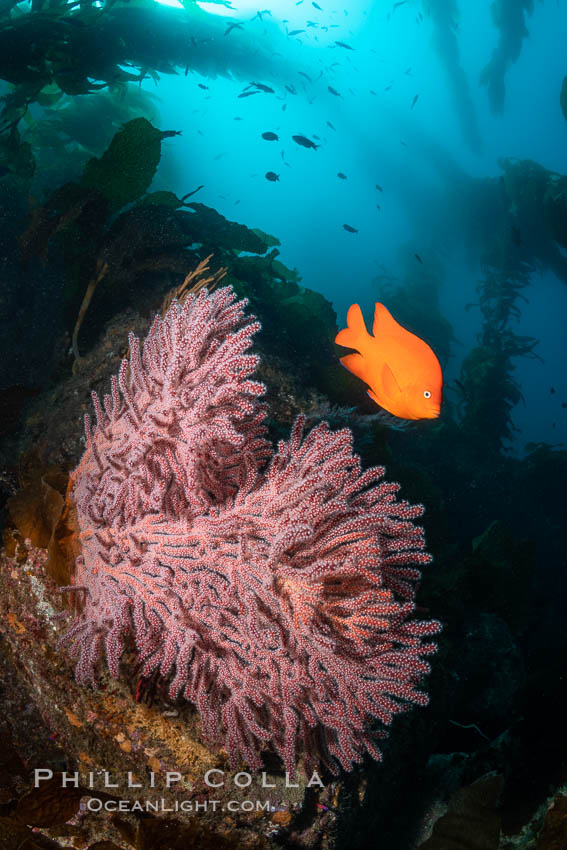
Garibaldi and Brown Gorgonian Muricea fruticosa, Catalina Island.
Image ID: 37157
Location: Catalina Island, California, USA
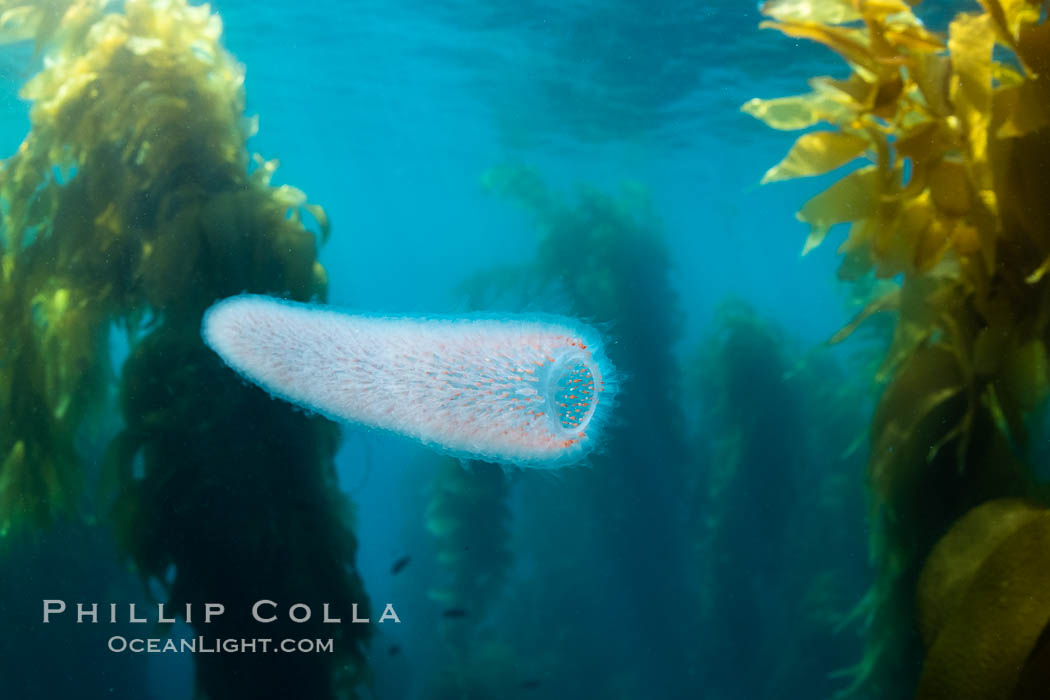
Pyrosome drifting through a kelp forest, Catalina Island. Pyrosomes are free-floating colonial tunicates that usually live in the upper layers of the open ocean in warm seas. Pyrosomes are cylindrical or cone-shaped colonies made up of hundreds to thousands of individuals, known as zooids.
Image ID: 37166
Location: Catalina Island, California, USA
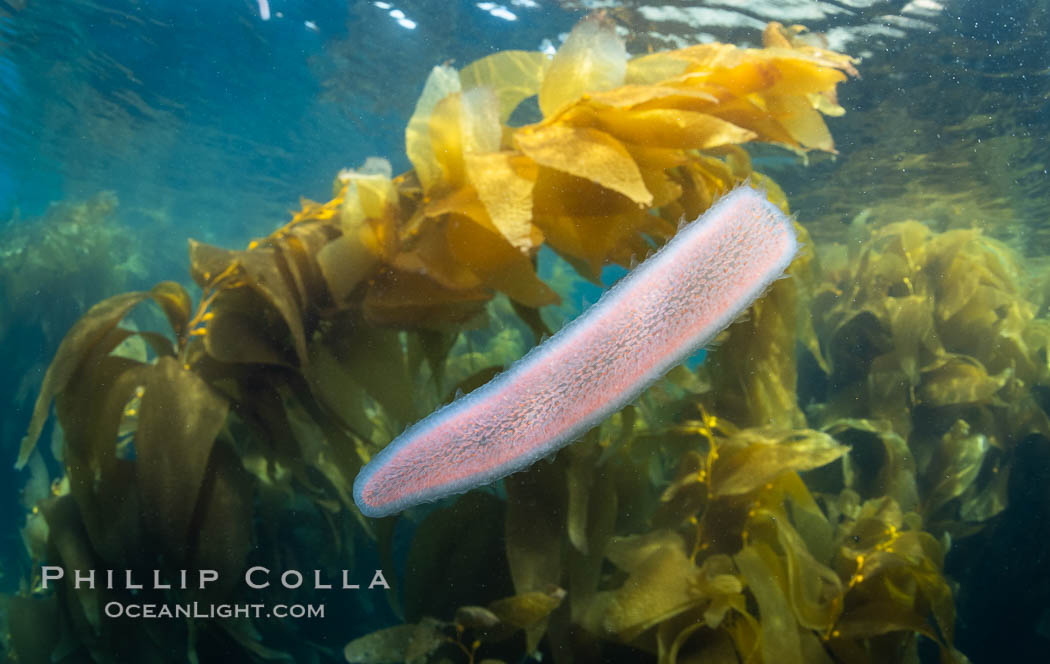
Pyrosome drifting through a kelp forest, Catalina Island. Pyrosomes are free-floating colonial tunicates that usually live in the upper layers of the open ocean in warm seas. Pyrosomes are cylindrical or cone-shaped colonies made up of hundreds to thousands of individuals, known as zooids.
Image ID: 37164
Location: Catalina Island, California, USA
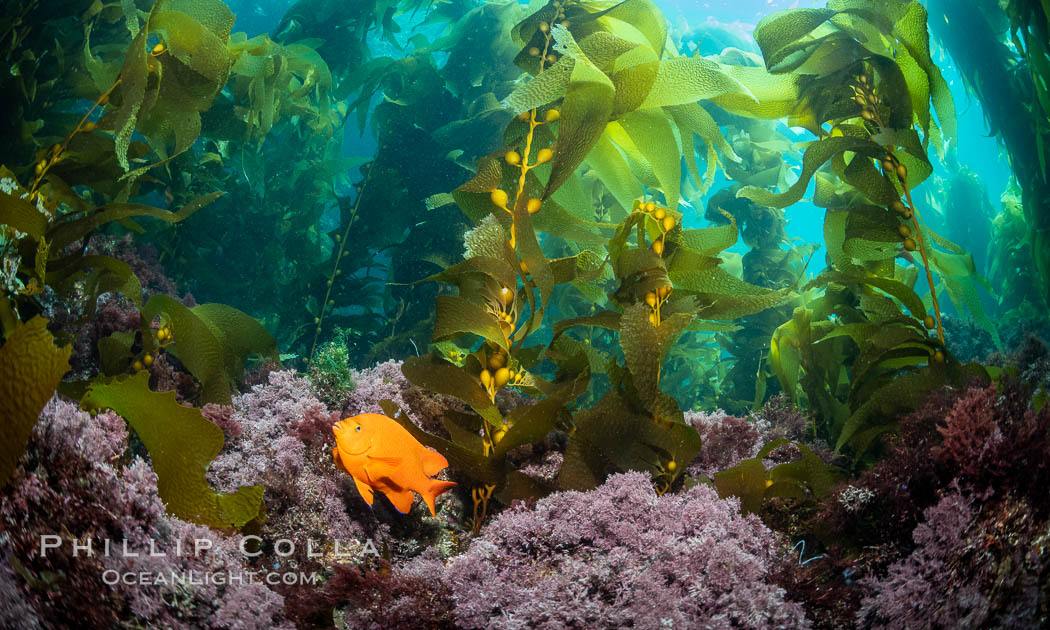
Garibaldi in kelp forest, Catalina Island.
Image ID: 37159
Location: Catalina Island, California, USA
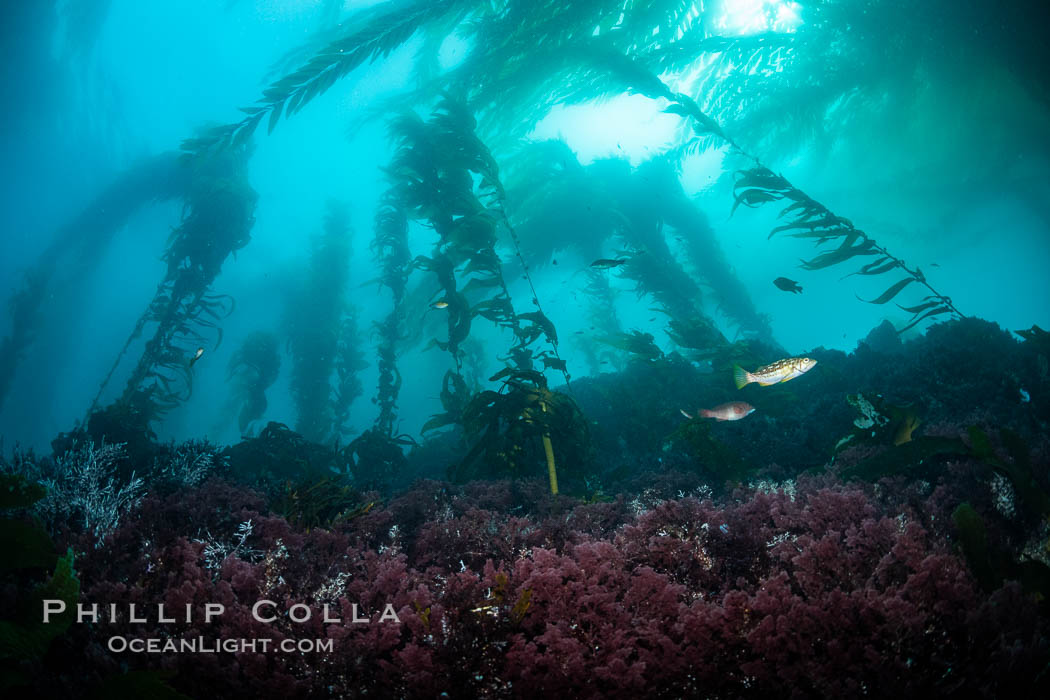
Kelp forest near Eagle Rock, West End, Catalina Island.
Image ID: 37134
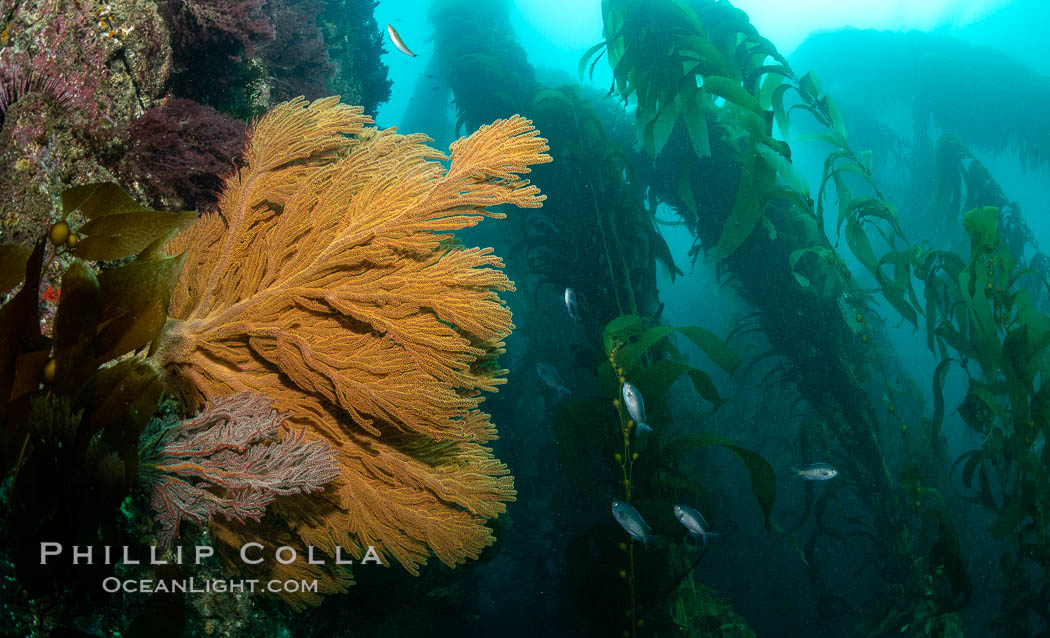
Golden gorgonian on underwater rocky reef, amid kelp forest, near Eagle Rock, Catalina Island. The golden gorgonian is a filter-feeding temperate colonial species that lives on the rocky bottom at depths between 50 to 200 feet deep. Each individual polyp is a distinct animal, together they secrete calcium that forms the structure of the colony. Gorgonians are oriented at right angles to prevailing water currents to capture plankton drifting by.
Image ID: 37135
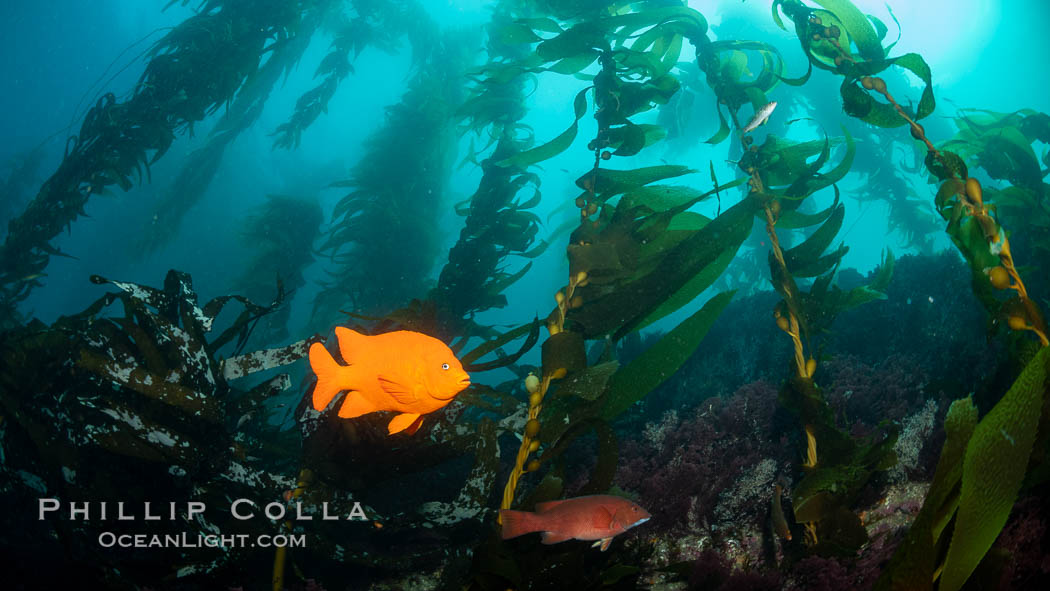
Garibaldi in kelp forest, near Eagle Rock, Catalina Island.
Image ID: 37136
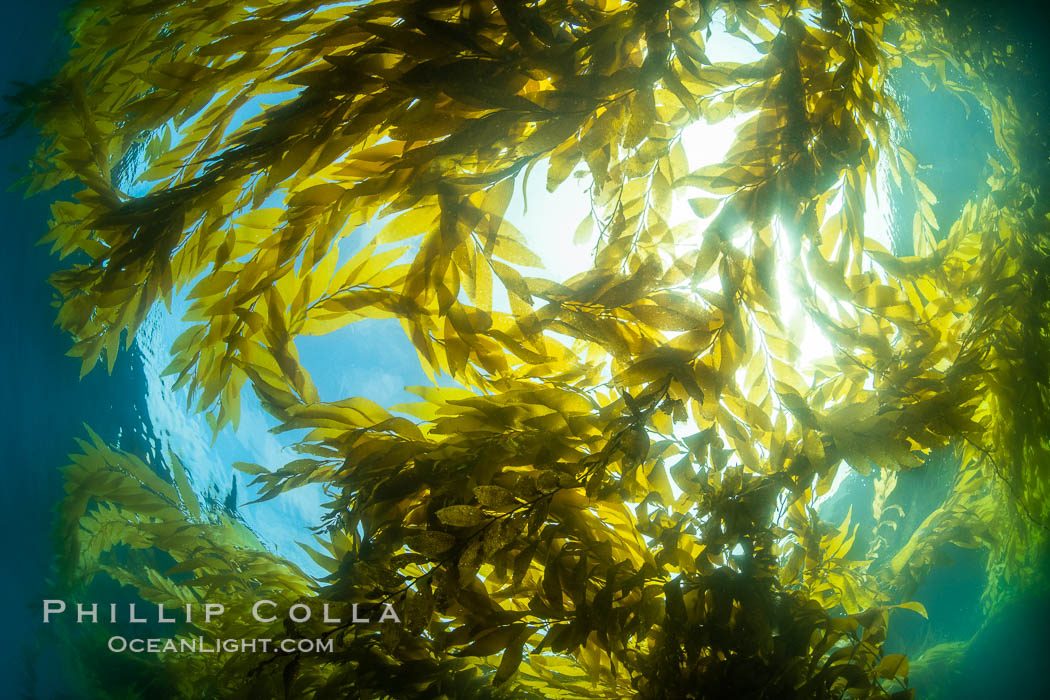
Kelp forest near Eagle Rock, West End, Catalina Island.
Image ID: 37141



